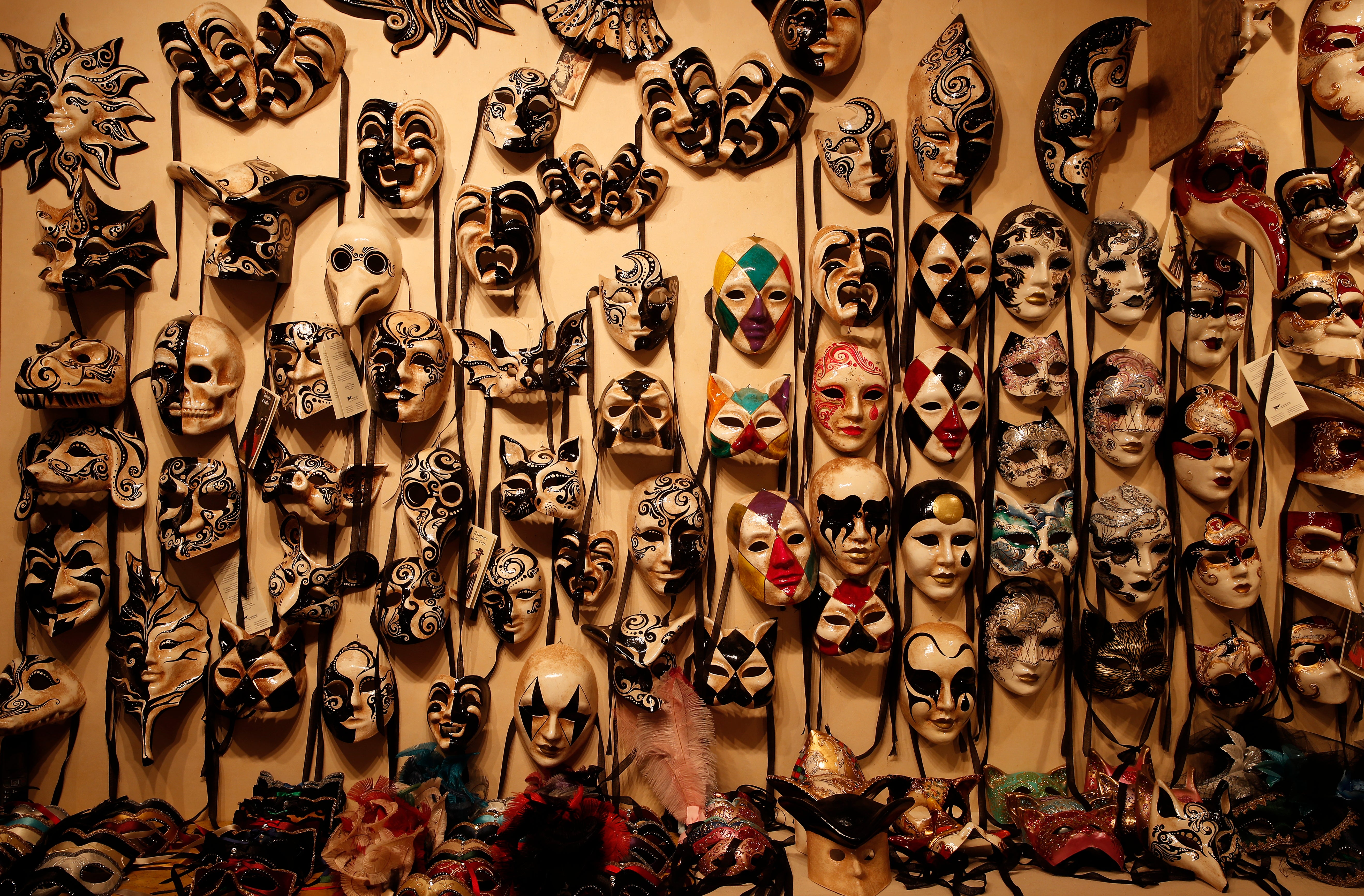AP PHOTOS: Venice has people in masks but no Carnival fun
In another year, masks would be a sign of the gaiety in Venice, an accessory worn for games and parties as big crowds parade about to show off their fanciful costumes

Your support helps us to tell the story
From reproductive rights to climate change to Big Tech, The Independent is on the ground when the story is developing. Whether it's investigating the financials of Elon Musk's pro-Trump PAC or producing our latest documentary, 'The A Word', which shines a light on the American women fighting for reproductive rights, we know how important it is to parse out the facts from the messaging.
At such a critical moment in US history, we need reporters on the ground. Your donation allows us to keep sending journalists to speak to both sides of the story.
The Independent is trusted by Americans across the entire political spectrum. And unlike many other quality news outlets, we choose not to lock Americans out of our reporting and analysis with paywalls. We believe quality journalism should be available to everyone, paid for by those who can afford it.
Your support makes all the difference.In another year, masks would be a sign of the gaiety in Venice an accessory worn for games and parties as big crowds parade about to show off their frivolous, fanciful costumes, especially ones with decorative face coverings.
The Italian canal city's Carnival festivities should have started Saturday, but the COVID-19 pandemic has made its annual appointment for more than two weeks of merry-making impossible.
Last year, with fears over the new coronavirus mounting, authorities abruptly shut down the Venice Carnival on its third day, just before Italy became the first country in the West to face a outbreak.
Back then, a “surge” meant crowds squeezing through Venice’s maze of carless streets, intent on meeting up in the vast St. Mark’s Square. The day that Carnival shuddered to a stop last year, the confirmed coronavirus cases in all of Italy numbered only 133.
Now Italy has logged more than 2.5 million confirmed virus cases, including more than 88,000 deaths but not including thousands who died without being tested. A “surge” has taken on a different, more ominous context. Masks are worn now to protect, not amuse.
Gondolas and other vessels are moored instead of preparing for Carnival's popular boat parade in the lagoon. Alleys are eerily empty. Venetians and the city's few visitors must be masked in public places, indoors and out, under a nationwide mandate.
Italy’s current infection-control restrictions do not allow traveling between regions. Foreign tourism, especially from the United States, dried up in the last year as governments imposed bans on international travel for nonessential purposes. Even if Carnival had been held, relatively few people would have made it to Venice.
The Carnival’s appeal is rooted back centuries, when, for a brief stretch in the run-up to Lent, the Catholic period of penitence that begins on Ash Wednesday, ordinary Venetians would strut about masks taking on temporary new identities, and for a few days become indistinguishable from members of the proud maritime city’s ruling class.
During Carnival, the mask served to “to protect, to reveal, and also to guarantee anonymity,” says Gualtiero Dall’Osto, who owns Tragicomico, an artisan’s shop making artistic masks. “Now, paradoxically, we are not able to experience the mask in this way, and we are forced to wear these (sanitary) masks that in some way block the liberation, the freedom, of our so-called senses.”
___
Follow all of AP’s pandemic coverage at https://apnews.com/hub/coronavirus-pandemic,https://apnews.com/hub/coronavirus-vaccine and https://apnews.com/UnderstandingtheOutbreak